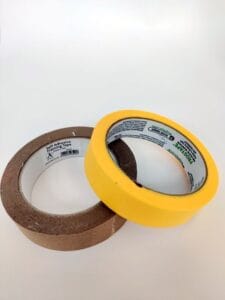Acrylics are much loved for their versatility, but mastering advanced techniques can elevate your work from amateur to professional level. Here’s how to push beyond basic washes and impasto:
Acrylic Pouring & Fluid Art
This technique involves thinning acrylics with pouring medium (or a mix of glue and water) to create mesmerizing, organic patterns.
- Tips for Success:
- Use a torch or straw to encourage “cells” (those beautiful bubble-like shapes).
- Layer colours in a cup before pouring for intricate designs.
- Tilt the canvas to guide the flow – work quickly before the paint dries.
- Seal with a high-gloss varnish for a glass-like finish.
You can use this technique to create interesting layers onto which you can add your portraits, landscapes or still life artwork.

Sgraffito: Scratching for Texture
Scrape into wet paint to reveal underlying layers – this is ideal for adding fine details like tree branches, waves or textured fabrics.
- Tools to Try: Palette knives, toothpicks, combs or even credit cards.
- Pro Tip: Let the base layer dry slightly before scratching to avoid muddy blending.
Masking for Sharp Edges
Whether you’re painting geometric abstracts or crisp architectural details, masking tape or fluid is your best friend.
- How to Use It:
- Apply masking fluid with a fine brush or silicone tool.
- With tape, press edges down firmly to prevent bleeding.
- Remove carefully once dry – peel at a 45-degree angle to avoid tearing.
If you find using tape fiddly, use the edge of a ruler or a builders trowel. Instead.



Dry Brushing Over Glazes
Want to create the illusion of weathered wood, ocean spray or distant foliage?
- Step-by-Step:
- Apply a smooth glaze (a thin, transparent layer) and let it dry.
- Load a stiff brush with thick, undiluted paint.
- Lightly drag it over the surface, letting the glaze peek through.
Retarder Medium for Oil-Like Blending
Hate how fast acrylics dry? A retarder slows drying time, giving you longer to blend.
- Best For: Portraits, skies and smooth gradients.
- Warning: Too much retarder can make your paint sticky – follow the manufacturer’s instructions.
Bonus: Layering with Opacity
Experiment with transparent v. opaque paints:
- Transparent (e.g. phthalo blue) = perfect for glazing.
- Opaque (e.g. titanium white) = ideal for corrections and highlights.
Final Tip: Always test mixes on scrap paper – acrylics darken as they dry!
NB I do not get paid to endorse any people or brands mentioned in my blogs.
If you enjoyed this post, please like, share and follow me. Sharing, liking and following raises the algorithms in my favour.
Thank you for your support.
